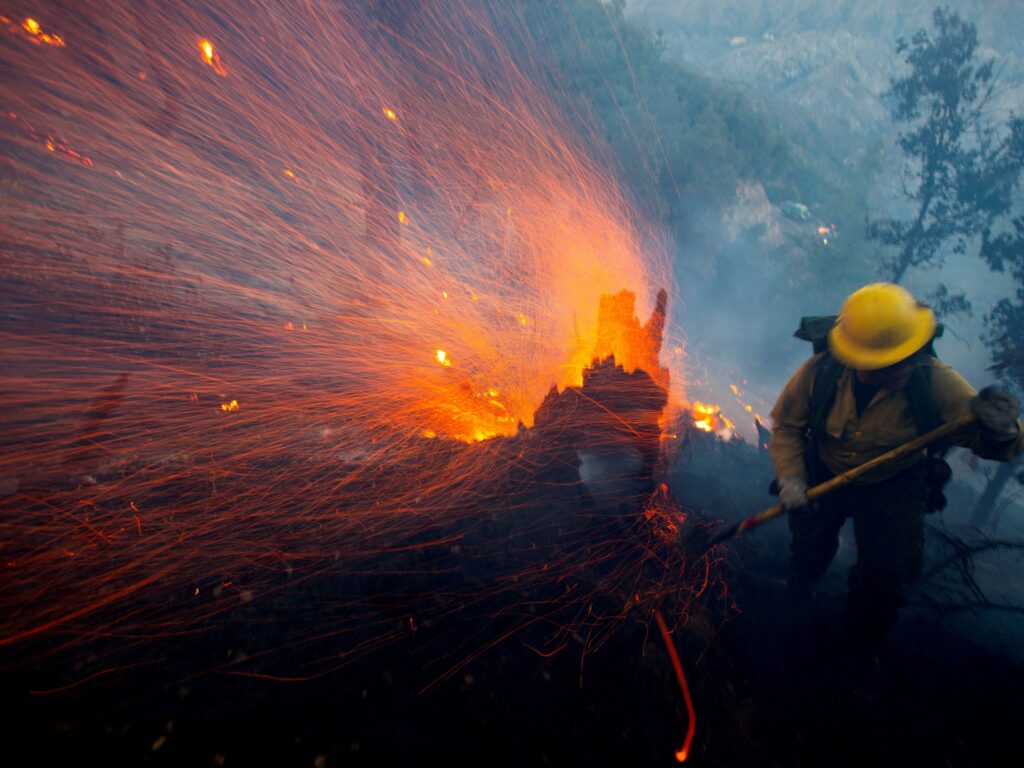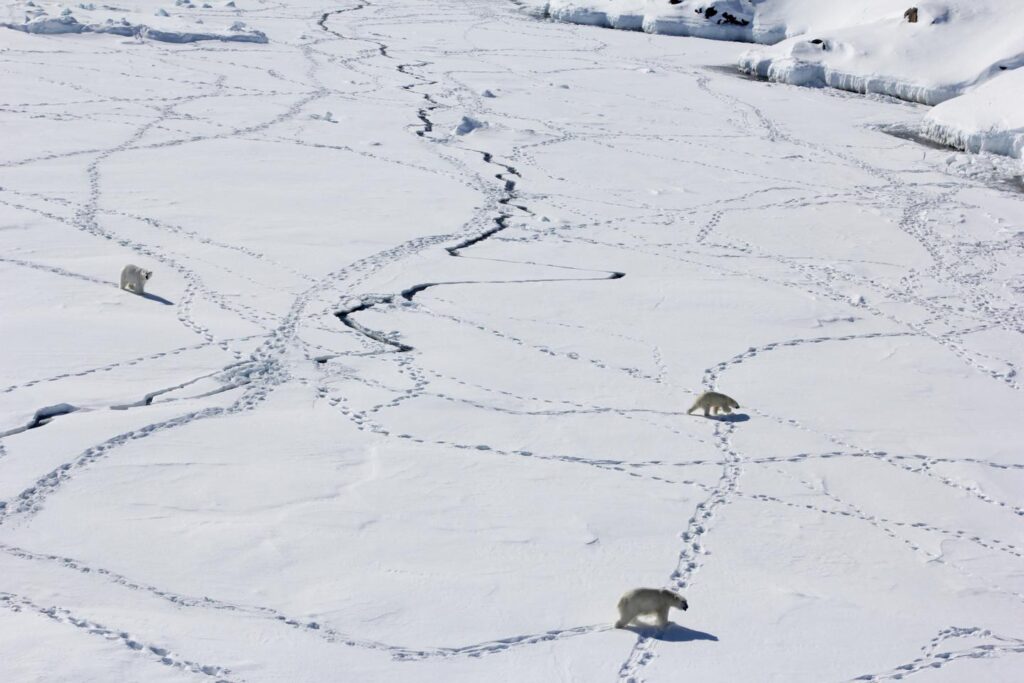As the United States enters its hottest months of the year, fire officials and scientists say they are preparing for wildfire activity to ramp up.
While the US fire season typically runs from late spring until early autumn, experts say the most intense fires tend to erupt in months like July and August, when temperatures are high and vegetation is dried out.
California has become emblematic of the scope and intensity of those wildfires. The western state tallied 8,110 blazes in 2024 alone — more than any other part of the country.
Just last week, the insurance company Gallagher Re found that two blazes this year in the Los Angeles area — the Eaton and Palisades fires — were responsible for nearly $40bn in insured losses alone. An estimated 30 people died in those fires.
That toll has put California in the crosshairs of a nationwide debate about how best to deal with wildfires and what the state and federal roles should be.
Earlier this month, on the six-month anniversary of the deadly infernos, US Senator Alex Padilla called on the federal government to invest more in fire preparedness, rather than scale back, as President Donald Trump has suggested he may do.
“We’re entering the next peak fire season. Fire season is year-round in California, but peak fire season is just beginning,” Padilla said.
He pointed out that the Los Angeles conflagrations sparked in the relatively mild month of January: “These fires took place in wintertime, not in the hot dry months of summer.”
That, experts say, is an indication of the potential scale of California’s wildfires, even under less-than-ideal circumstances.
Potential for a ‘fairly severe’ season
Scientists say that California’s wildfires have been fairly subdued so far this year, but they are expected to pick up as summer progresses into August, especially in parts of the state that have struggled with drought in recent months.
“We’ve had a number of small-to-medium-sized fires, but nothing too startling so far,” Max Moritz, a wildfire specialist at the University of California at Santa Barbara (UCSB), told Al Jazeera in a recent phone call.
“But that’s kind of where we’d expect to be at this point in the season. And we’ve seen some factors that point to what could be a fairly severe fire season as we enter the drier months.”
Scientists are quick to stress that wildfire seasons can be affected by a variety of factors and are difficult to predict.
Events associated with wildfire, such as periods of high winds, extreme heat or lightning storms, are themselves mercurial. Acts of human error or negligence, like a downed power line or a failure to properly extinguish a campfire, can also set a landscape ablaze.
Once a burn starts, elements like wind strength and firefighter access can make the difference between a fire that is quickly snuffed out and one that grows larger and more intense.
“It’s really hard to come up with a single rationale for why some seasons are so much more intense than others,” said Scott Stephens, a professor of fire science and forest policy at the University of California, Berkeley.
The fire seasons of 2020 and 2021 in California, for example, saw record-breaking fires that spread across enormous portions of land.
The next several years were, by comparison, fairly tame, although scientists say that factors such as climate change have contributed to fire seasons that see higher-than-average levels of activity.
But there are some indicators that scientists and fire officials look to as clues, such as the prevalence of drought and the level of moisture present in soil and plant life. While many catalysts can spark a fire, how quickly it spreads and how unstoppable it becomes is largely a matter of fuel, in the form of thick, dry vegetation.
Stephens says that southern California’s chaparral landscape — typified by low-lying shrubs like sage — is especially prone to fire, and it has had a “very dry” year.
The US Drought Monitor says that about 23 percent of the state is currently experiencing conditions ranging from severe to exceptional drought, with many of those areas concentrated in southern California.
California’s largest fire of the year thus far, the Madre Fire, took place in San Luis Obispo County in central California and reached about 80,000 acres (32,400 hectares), according to the state agency Cal Fire.
That blaze is more than 95 percent contained, the term fire officials use to reference the portion of a fire effectively surrounded by protective lines built to stop it from spreading.

Shifting policies for emergency management
Political changes are also looming over this year’s fire season, as cuts to weather forecasting and emergency services under the Trump administration spark concern.
Scientists argue that such services play an essential role in trying to understand each fire season.
“We rely a lot on modelled forecasts for different weather events, and fire weather is certainly an example of that,” said Moritz. “If these services take a hit, we’re all at risk of worse outcomes.”
Since returning to office for a second term, Trump has led an effort to downscale the federal government, including by reducing its emergency services and scientific research.
Earlier this year, for instance, the National Weather Service (NWS) lost nearly 600 workers as part of the Trump-led employee reduction. The president has since faced criticism after a series of floods in the state of Texas killed nearly 135 people: Democratic lawmakers have blamed staffing cuts for hindering forecasting and emergency response efforts.
The administration has also sought to overhaul the Federal Emergency Management Agency (FEMA), which oversees the federal response to disaster recovery.
Trump had proposed redistributing FEMA’s responsibilities to state and local governments. In the meantime, Homeland Security Secretary Kristi Noem reportedly implemented a policy in June that required any FEMA expenses over $100,000 to be approved by her personally.
That, critics say, has led to a slowdown in services. Just last Monday, CNN broke the news that Ken Pagurek, the head of FEMA’s search and rescue operations for urban areas, resigned in frustration over the bureaucratic hurdles.
Trump himself has threatened to withhold disaster aid from states like California if they do not align with his policies on immigration and other issues. He and his allies have blamed Democrats for the Los Angeles wildfires.
“This is one of the worst catastrophes in the history of our Country. They just can’t put out the fires. What’s wrong with them?” Trump wrote in January.
Preventing out-of-control wildfires
California, however, has sought to implement its own measures to address the challenges that come with longer and more intense fire seasons.
Those tactics include a greater emphasis on fuel reduction efforts, including through prescribed burns, in which fire is intentionally introduced to a landscape under controlled circumstances to help thin excess vegetation.
“Prescribed burns are something we’ve definitely encouraged. We’re doing a lot more of them than we used to,” said Jesse Torres, a spokesperson with Cal Fire.
He says that such efforts typically take place in late spring, after periods of rainfall when wetter conditions reduce the risk of a prescribed burn spreading out of control.
Fire scientists, however, say that the scale of those efforts has yet to reach the levels needed to have a serious impact on the state’s fire activity.
While Cal Fire has a yearly goal of treating 500,000 acres (202,300 hectares) of land through fuel reduction efforts, Cal Fire says it has only covered about 156,000 acres (63,100 hectares) during the current fiscal year, although it expects that figure to increase.
“There is still a lack of sufficient burning and thinning efforts,” said Stephens. “If forests were more resilient, the impact of these fires would be less extreme.”


